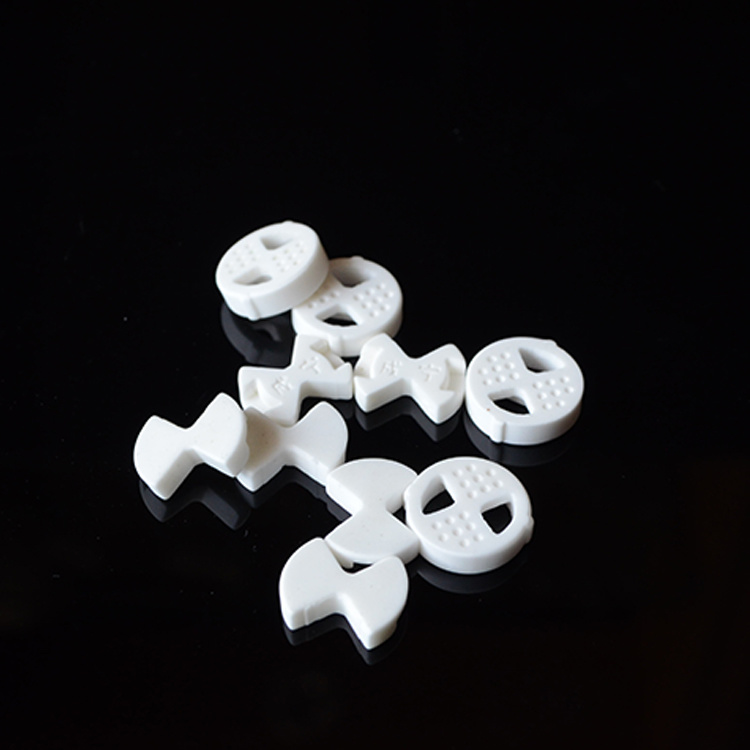
The Role of Alumina Mullite Ceramic Rods in Modern Building Materials
Time:
2025-04-21 14:20
Source:
The Role of Alumina Mullite Ceramic Rods in Modern Building Materials
Table of Contents
- Introduction to Alumina Mullite Ceramic Rods
- Key Properties of Alumina Mullite Ceramic Rods
- Applications in Modern Construction
- Advantages Over Traditional Materials
- Challenges and Considerations
- Future Trends in Building Materials
- Frequently Asked Questions
- Conclusion
Introduction to Alumina Mullite Ceramic Rods
Alumina mullite ceramic rods represent a significant advancement in the realm of building materials. These versatile components are characterized by their unique blend of alumina and mullite, resulting in a material that is not only robust but also remarkably effective in various construction applications. With the construction industry constantly evolving, the demand for materials that can withstand high temperatures, mechanical stress, and aggressive chemical environments is at an all-time high. Alumina mullite ceramic rods meet these demands, making them a preferred choice among architects and builders.
Key Properties of Alumina Mullite Ceramic Rods
To fully appreciate the role of alumina mullite ceramic rods in modern building materials, it is essential to understand their core properties. These characteristics set them apart from traditional building materials and contribute to their increasing popularity in construction.
Thermal Resistance
Alumina mullite ceramic rods exhibit impressive thermal resistance, making them ideal for applications where high-temperature stability is crucial. They can withstand temperatures exceeding 1400°C without deforming or losing their structural integrity. This property is particularly advantageous in industries such as glass manufacturing and metal processing, where extreme temperatures are commonplace.
Mechanical Strength
The mechanical strength of alumina mullite ceramic rods is another significant factor that enhances their utility in construction. These rods boast high flexural strength and resistance to fracture, which makes them suitable for both structural and non-structural applications. Their durability ensures that they can endure the rigors of heavy loads and dynamic forces, thus providing a reliable solution for modern architecture.
Chemical Stability
In addition to thermal and mechanical properties, alumina mullite ceramic rods exhibit remarkable chemical stability. They are resistant to many acids and alkalis, which allows them to maintain their integrity even in harsh environments. This resistance to chemical corrosion is particularly beneficial in applications involving aggressive chemicals, ensuring longevity and reducing maintenance costs.
Applications in Modern Construction
The versatility of alumina mullite ceramic rods opens the door to a wide range of applications in modern construction. Their unique properties allow them to fulfill various roles, from insulation to decorative elements.
Insulation Materials
One of the most prominent uses of alumina mullite ceramic rods is in insulation. Their high thermal resistance makes them excellent candidates for thermal insulation in industrial applications, such as furnaces and kilns. By reducing heat loss, these rods contribute to energy efficiency and lower operational costs, making them a practical choice for modern energy-conscious buildings.
Refractory Applications
Alumina mullite ceramic rods are also extensively used in refractory applications. Their ability to withstand high temperatures without degrading makes them invaluable in industries such as glass, steel, and cement production. These rods are often used as linings in furnaces and kilns, protecting structural components from extreme heat and corrosive materials, thereby enhancing the overall lifespan of the equipment.
Decorative Uses in Architecture
Beyond their functional applications, alumina mullite ceramic rods are becoming increasingly popular in decorative architecture. Their aesthetic appeal, combined with their durability, makes them ideal for facade elements, interior finishes, and artistic installations. By integrating these rods into building designs, architects can create visually stunning structures that also benefit from the inherent strength and stability of ceramic materials.
Advantages Over Traditional Materials
When compared to traditional building materials such as wood, concrete, and metals, alumina mullite ceramic rods offer several distinct advantages:
1. **Durability**: Unlike materials that can warp or degrade over time, ceramic rods maintain their integrity under adverse conditions.
2. **Low Maintenance**: Their resistance to chemical and thermal stress leads to lower maintenance requirements, saving time and costs in the long run.
3. **Eco-Friendly**: Ceramic materials often have a lower environmental impact compared to their counterparts, as they can be produced with minimal waste and can often be recycled.
4. **Energy Efficiency**: The use of alumina mullite rods in insulation applications can significantly reduce energy consumption in buildings.
Challenges and Considerations
While the advantages of alumina mullite ceramic rods are numerous, some challenges must be considered before widespread adoption in the building materials industry. These include:
- **Cost**: The initial investment for ceramic materials can be higher than traditional options, which may deter some builders.
- **Brittleness**: While strong, ceramics can be brittle under sudden impact, requiring careful handling and installation.
- **Technical Knowledge**: The effective use of alumina mullite ceramic rods necessitates a certain level of expertise, which may not be readily available in all construction sectors.
Future Trends in Building Materials
As the construction industry continues to evolve, the trend toward innovative materials like alumina mullite ceramic rods is expected to grow. With increasing emphasis on sustainability and energy efficiency, more builders are likely to explore the benefits of ceramics in their projects. The development of advanced manufacturing techniques will further enhance the properties of these materials, making them even more attractive for future applications.
Frequently Asked Questions
1. What are alumina mullite ceramic rods made of?
Alumina mullite ceramic rods are primarily composed of alumina (Al2O3) and mullite (3Al2O3·2SiO2), which provide them with their unique properties.
2. How do alumina mullite ceramic rods compare with other insulation materials?
Alumina mullite ceramic rods offer superior thermal resistance and durability compared to traditional insulation materials, making them more effective in high-temperature applications.
3. Are alumina mullite ceramic rods environmentally friendly?
Yes, ceramic materials generally have a lower environmental impact and can often be produced with sustainable practices.
4. What industries primarily use alumina mullite ceramic rods?
They are commonly used in industries such as glass manufacturing, metal processing, and construction, particularly in applications requiring high-temperature stability.
5. Can alumina mullite ceramic rods be recycled?
Yes, alumina mullite ceramic materials can be recycled, contributing to a more sustainable building practice.
Conclusion
Alumina mullite ceramic rods represent a groundbreaking innovation in modern building materials, combining exceptional properties with a wide range of applications. Their thermal resistance, mechanical strength, and chemical stability make them invaluable in various industrial and architectural settings. While challenges exist, the advantages they bring to construction and design are undeniable. As the building industry seeks more sustainable and efficient solutions, the role of alumina mullite ceramic rods is poised to expand, paving the way for a new era in architectural innovation. The future of construction looks bright with the integration of these advanced materials, promising not only stronger structures but also more sustainable and energy-efficient buildings.
Alumina Mullite Ceramic Rods Tube
2025-03-26
2025-01-26

